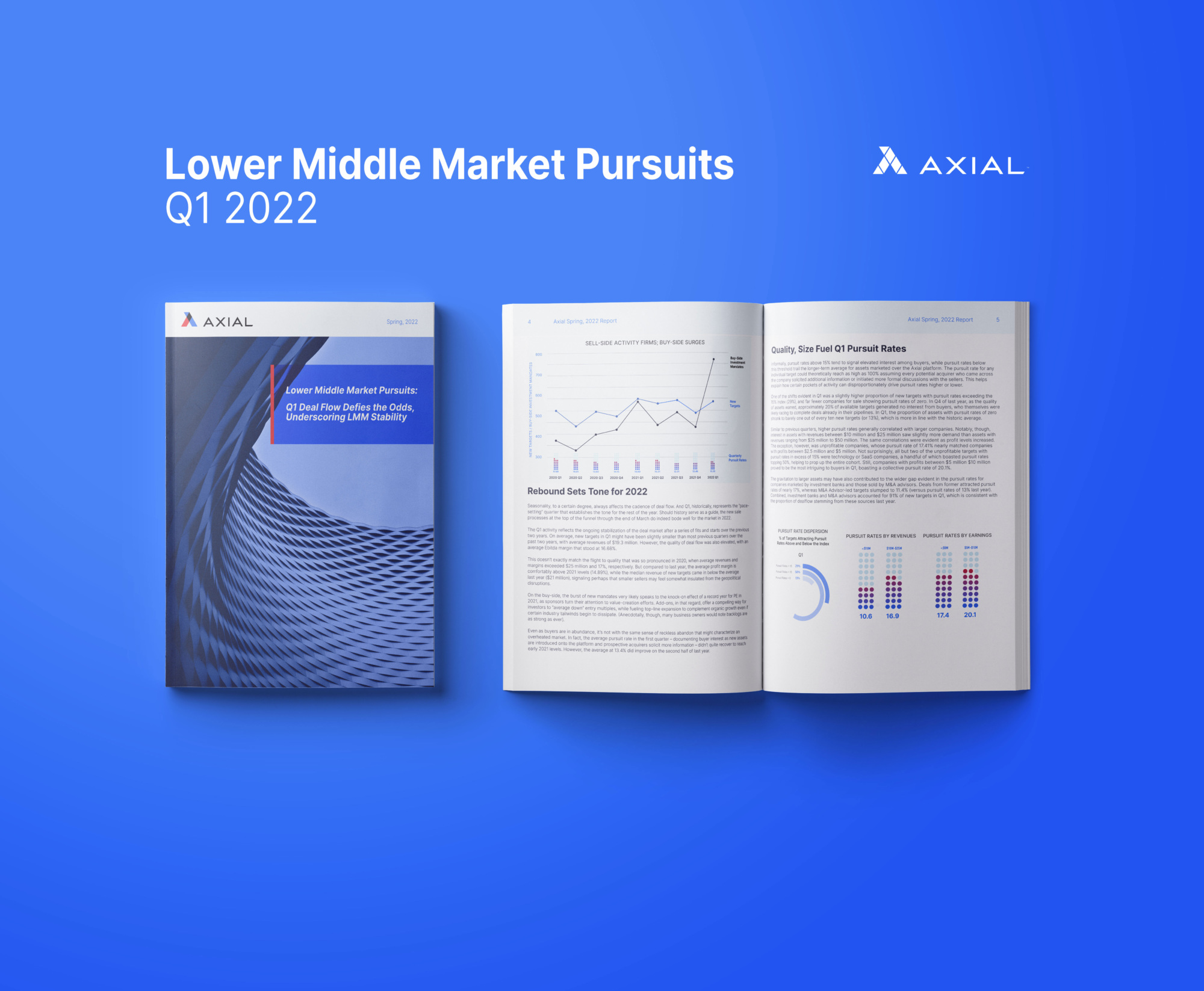
Small Business Exits: data from 100+ January closed deals
Welcome to the January edition of Small Business Exits, the monthly publication featuring fully anonymized deal data from a selection…
Tags
The first quarter of 2022 seemed to mark a return of bearish sentiment. The S&P 500 fell by 4.6% during the first three months of the year, while global M&A slumped by 23% according to data provider Refinitiv. One might assume that in the lower middle market, the same factors influencing public equities and M&A volume – namely an inflationary environment, the war in Ukraine and the prospect for rising interest rates – might also chip away at sentiment among smaller sellers and acquirers. Instead, the lower middle market stood out as a refuge for deal professionals, where both the sell-side and buy-side activity are showing positive momentum to start the year.
Our latest Lower Middle Market Pursuits report, “Q1 Deal Flow Defies the Odds,” provides evidence demonstrating that LMM activity, if not immune to the emerging macroeconomic and geopolitical threats, is at least insulated to a certain degree from the uncertainty affecting other areas of the market.
To wit, new sale processes on the Axial platform, while they didn’t quite surpass 2021’s record-breaking quarter in Q1, did rebound by more than 10% sequentially compared to the fourth quarter. And on the buy-side, new mandates from prospective acquirers surged by 33%, year over year. So while deals may be moving more slowly down the funnel – at least based on the pullback in closed M&A volume – the activity on the Axial platform measuring buyer and seller intent should underscore that neither side is ready to move to the sidelines.
The question on the minds of dealmakers, however, is what extent and how have appetites changed given the evolving backdrop?
The latest report documents that the quality of deal flow remains elevated based on the average profit margins of new assets coming to market. Meanwhile, pursuit rate data points to a few distinct areas of interest among prospective acquirers, most notably technology and financial services, while other more traditional safe havens saw pursuit rates slump in Q1. (Pursuit rates, recall, measure buyer intent, climbing as prospective acquirers request more information about a company for sale and increasing as transactions progress further down the deal funnel).
On the buy-side, the surge of new mandates seemed to be spurred by growth in the number and proportion of “professional” acquirers – PE and independent sponsors – seeking new deals in certain industries. The business services, transportation, and consumer goods sectors were among the fastest growing areas of interest, year over year.
This is just a taste of the data presented in the latest Pursuits report. It offers a snapshot of how Axial’s thousands of active members are navigating the shifting landscape. It also represents a proxy of the broader lower middle market, which may not enjoy the same transparency as the larger deal realm (and thus is often overlooked), but is indeed quite distinct and marches to a beat of its own drum.
In Q1, the enduring optimism within this segment, based on the latest data, underscores this contrast while also reinforcing the resiliency of lower middle market participants.
We hope you enjoy the report!
